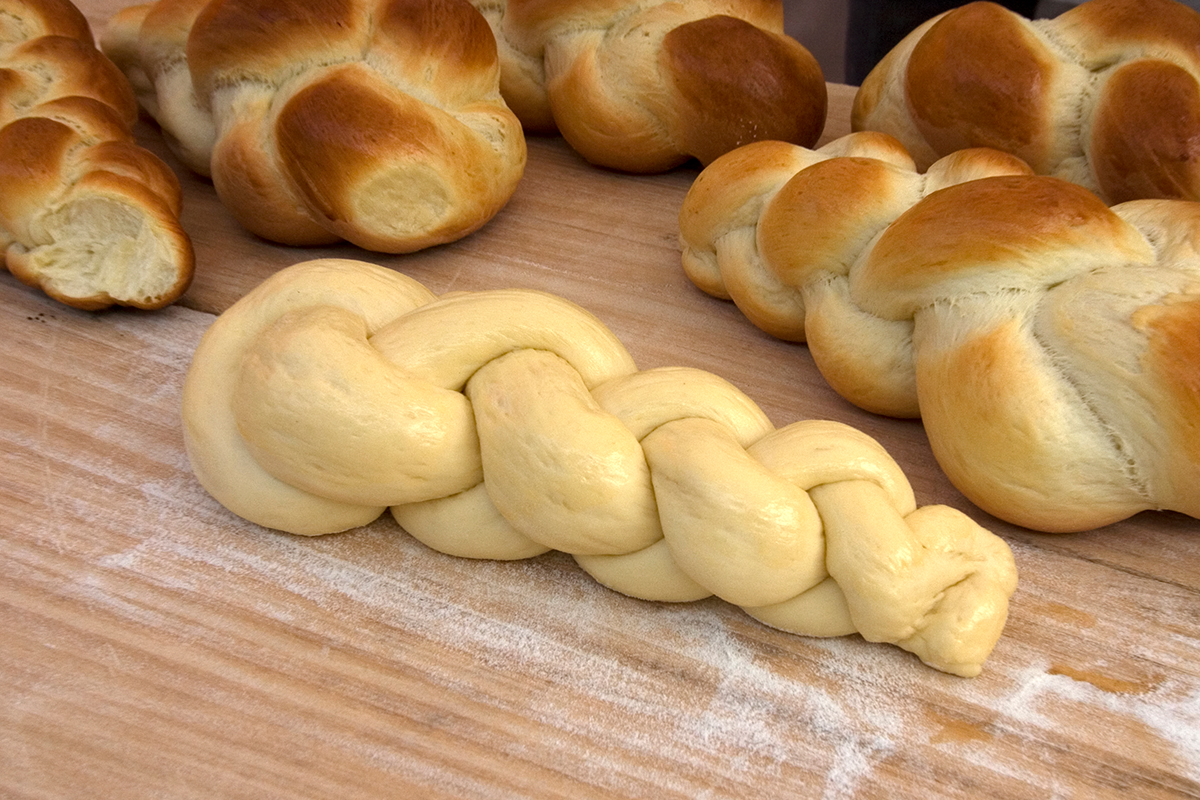I’m a homebody at the best of times, so for me, the loneliness that comes with social distancing is a strange thing — it’s not that I’m missing many large social gatherings that I otherwise would have attended, but that the choice is out of my (thoroughly washed) hands, and the physical boundaries of my world feel very small.
So, naturally, I have turned to Jewish cooking as a way to feel connected with the people and places outside my six-foot social distancing bubble.
Last week I made perogies for the first time. They were a “special treat” food growing up — we didn’t make them at home, but we had our one favorite Polish restaurant in the city where we would go once or twice a year, and that was always part of my order (with a lot of sour cream, of course).
I have always loved this food, but as I boiled, sautéed, seasoned, kneaded, filled, and shaped, I felt an extraordinary sense of kinship with the generations of Eastern European Jews — my ancestors — who have been doing these same little actions in their own kitchens, in shtetls and metropolises, from generation to generation. When I made the classic perogi half-moon shape over and over again, crimping the edges with my fingers, I felt aware that my hands were following the pattern made by thousands of other hands, preparing a meal that would belong on my grandparents’ or great-grandparents’ table as easily as it belongs on mine.
I’ve also been making challah for years, and now even more so. After a first disastrous attempt at the family recipe I got from a second cousin, I’ve been using the one from the New York Times (which has never let me down), but even without that direct connection to the recipe, I still find a lot of Jewish joy in the technical traditions required to make this bread. When I crack the eggs into a glass to check them for blood spots, and find a nice warm place for the dough to rise, and decide what side of the “raisins or no raisins” debate I’m falling on today (for the record, I’m enthusiastically pro-raisins-in-challah, just anti-an-extra-trip-to-the-store-if-I-don’t-already-have-them-in-the-house), I feel I am stepping into a headspace where I acknowledge the most everyday Jewish rituals as beautiful and holy in themselves.
Going to synagogue and praying with a minyan is an important part of Jewish life for so many people — and those of us who do participate in these parts of Jewish practice are having to adapt very quickly under the circumstances — but the little traditions we can do within our own homes provide a connection to identity and peoplehood as well.
When I braid the challah — either a regular six-stranded braid of a circular Rosh Hashanah pattern — I think about how, by participating in this action, I am finding a small way to weave myself into my tradition, heritage, and culture. I feel I can catch a glimpse of the generations who have done these things before me, and the generations who will persist in doing them after me. Sure, it’s just bread, but the act of making it leaves me feeling a little more centered and contented about my place in the universe.
Recently, I have also been thinking about how Jewish food is well-suited to moments of challenge, uncertainty, and isolation. Around this time last year, I was joking with my friends about what calling matzah the “bread of affliction” would sound like to the bakers who first made it.
“Seriously, guys?” I can almost hear them saying from thousands of years ago. “It’s not perfect, but it isn’t that bad.”
And while matzah is definitely dry and crumbly, it was also the food that met the needs of the moment, just like more substantial Jewish cooking is doing for me and so many others right now.
As I slowly work through my fridge drawer full of potatoes and onions (and what an incredibly predictable pair of ingredients for an Ashkenazi Jewish woman to have too much of in an emergency!), it occurs to me that so many of the Jewish food traditions I know were built to be resilient. Kugels are incredibly adaptable — sweet or savory, potatoes or noodles or apples or carrots, and you have a hearty side dish that can last all week. Chicken soups can use up pretty much any produce lying around in the fridge and will freeze perfectly for later. Perogies can be filled with anything from the classic mashed potatoes and cheese to apples, mushrooms, and onion jam. Under these circumstances of self-isolation, routine changes, and grocery shelves being emptier than usual, I find my Jewish food traditions are meeting the needs of this moment, too — providing a sense of connection to my larger community while allowing me to nurture and care well for myself.
For many of us, the coming weeks and months are going to continue to bring significant changes to our daily routines, and we will have to adapt to different ways of connecting with one another as we practice social distancing where possible to keep our communities safe. But we can also lean on the little rituals that have not changed — pinching dough, braiding bread, cracking eggs — to nourish ourselves with tradition as well as food.
Header Image of challah by ishai01/Getty Images.



